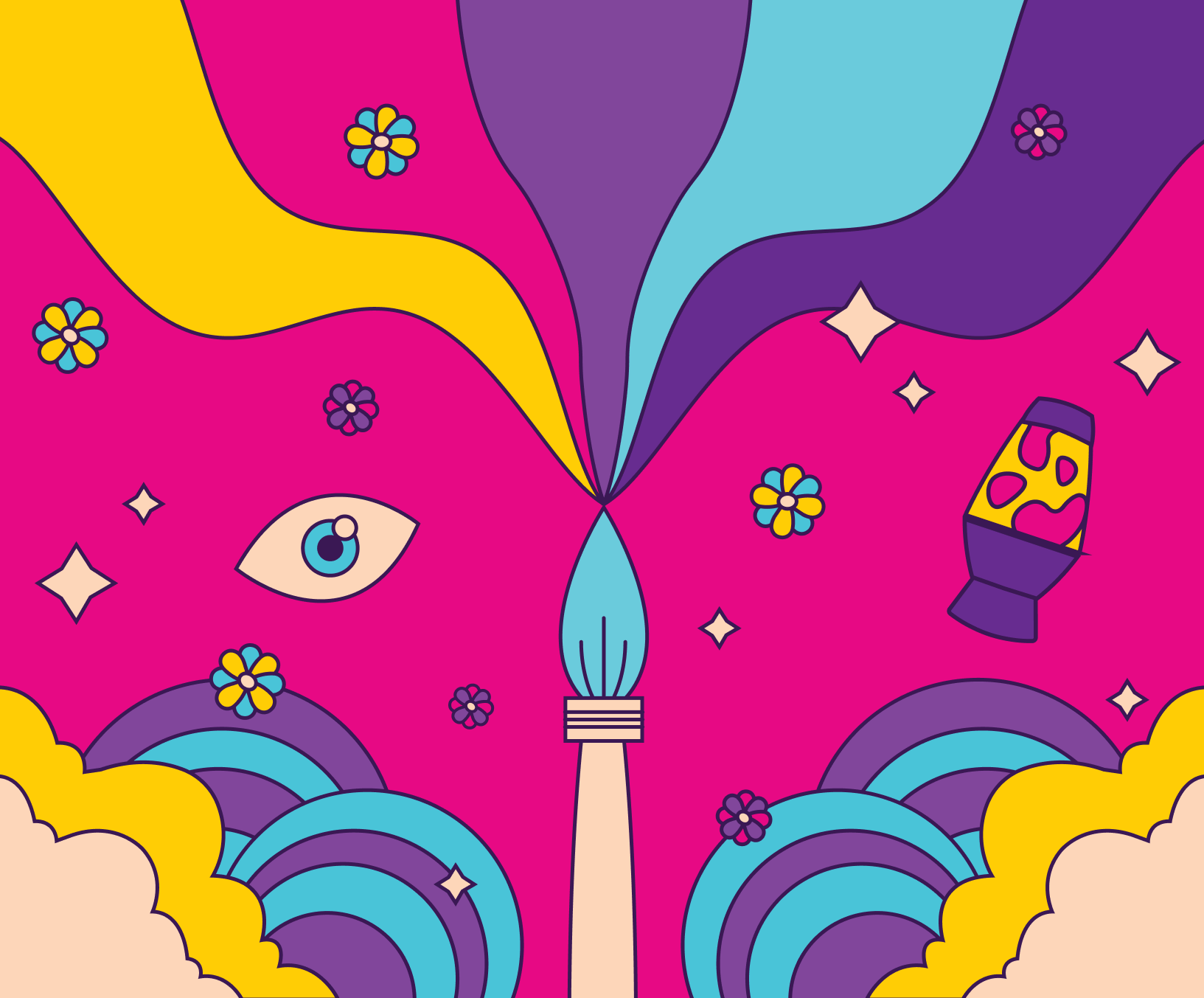
The opposite of anxiety isn’t calm, it’s creativity
I recently listened to a podcast with renowned life coach, Martha Beck, and something she said about anxiety caught my attention. She said, “the opposite of anxiety isn’t calm, it’s creativity.” This phrase struck me because I’ve recently witnessed anxiety reduction through creativity in my own life.
Scientific Evidence: Engaging in creativity and art increases wellbeing and reduces anxiety
Always game for a new rabbit hole, I went on the chase and came upon the book Your Brain on Art, which illuminates the scientific evidence that making or appreciating art boosts our happiness. The authors coined this process “microdosing aesthetics.” Engaging in art, like painting or playing an instrument, for as little as 45 minutes reduces the stress hormone cortisol significantly. Twenty minutes of doodling or humming, they say, can provide immediate support for your physical and mental state.
Martha Beck’s blog post on the same topic went on to say, “Any artistic activity can lower our anxiety and boost our wellbeing: coloring, dancing, sculpting, quilting, playing an instrument, knitting, creative writing, cooking—choose your favorite. As you microdose, don’t even think about the result. For a while, don’t show anyone your process or the result. This is not a competition; it’s medicine for your happiness.” Read the whole blogpost here.
Personal Experience with Microdosing Creativity
For a long time I had no creative practice because I had lost the joy in it. I had developed such a harsh inner critic through art school, and working as a professional artist, that I’d lost the desire to create. But by shifting my focus from the final outcome to the creative process itself, I’ve discovered a method that not only quiets my inner critic but also reignites my joy in creating. This approach has allowed me to embrace spontaneity and experimentation without the pressure of perfection, allowing me to reconnect with a creative practice and experience the stress-relieving benefits of creativity once again.
The Practice of Switch Drawing
The practice I’m referring to is what my son and I call “switch drawing.” This creative exercise involves each of us starting a drawing individually and then passing it to each other to continue after a set time or signal. This approach is amazing at encouraging me to relinquish control, embrace spontaneity, and help me focus solely on the creative process. It’s one of the most relaxing things that I do on a regular basis.
Benefits of Switch Drawing
Because switch drawing has been transformational to my own relationship with creativity I’ve been singing its praises to all who will listen. Below are some of what I find so valuable in this approach.
- No Rules, No Mistakes: In switch drawing, there are no strict guidelines or expectations of perfection. This freedom fosters creativity and reduces self-imposed pressure.
- Versatility: It’s adaptable for any group size or age group, making it accessible to everyone, regardless of artistic skill.
- Inner Critic Suppression: By involving others and sharing creative control, switch drawing helps silence the inner critic, fostering a more relaxed and enjoyable creative experience.
- Social Connection: Unlike many solitary art forms, switch drawing fosters quiet connection among participants.
Case Study: Anxiety Reduction with My Son
When we introduced switch drawing into our evening routine, it made a remarkable difference for my son, who was struggling with anxiety about school as he adjusted to kindergarten. Each night, he would resist bedtime and express dread about the upcoming school day. However, incorporating switch drawing before bed transformed our evenings. I noticed a palpable shift in both our moods as we started drawing and entered a calm and relaxed state. Remarkably, instead of facing bedtime with resistance and anxiety, after a 20-30 minutes switch drawing session, my son began to peacefully declare his readiness for sleep. This was a transformation – any parent of small children can attest to how rare it is to have a child request to go to bed.
Case Study: Social Ease and Connection through Creativity
During a recent three-day work retreat in Richmond, our team participated in various structured activities, including a team-building exercise of our choice. A coworker and I opted to host a switch drawing session, which attracted around twelve participants. It was the second day of the retreat, and as an introvert I was already feeling socially drained from continuous interaction. However, as we settled into our switch drawing session, a sense of calm enveloped us. I could feel my nervous system relaxing. It was a unique experience to sit in silence together yet feel connected through our shared creativity. I highly recommend switch drawing as a team-building exercise.
Closing Thoughts
I find it gratifying when science validates what I intuitively sense, so naturally, I was thrilled to learn about the scientific evidence supporting the therapeutic benefits of creativity. What’s even more inspiring is that this evidence underscores the intrinsic value of the creative process itself. Whether you produce a masterpiece or something mediocre, it doesn’t matter – isn’t amazing to know that the act of creating inherently benefits your wellbeing? Through practices like switch drawing and other creative outlets, I’ve personally witnessed how incorporating even small doses of creativity into daily life can profoundly enhance mental wellbeing and alleviate anxiety.
Curious what switch drawing looks like? Here’s some pics in action and a few resulting drawings.
Switch Drawing at the Work Retreat




Switch Drawing with my Son




Loved the article? Hated it? Didn’t even read it?
We’d love to hear from you.




